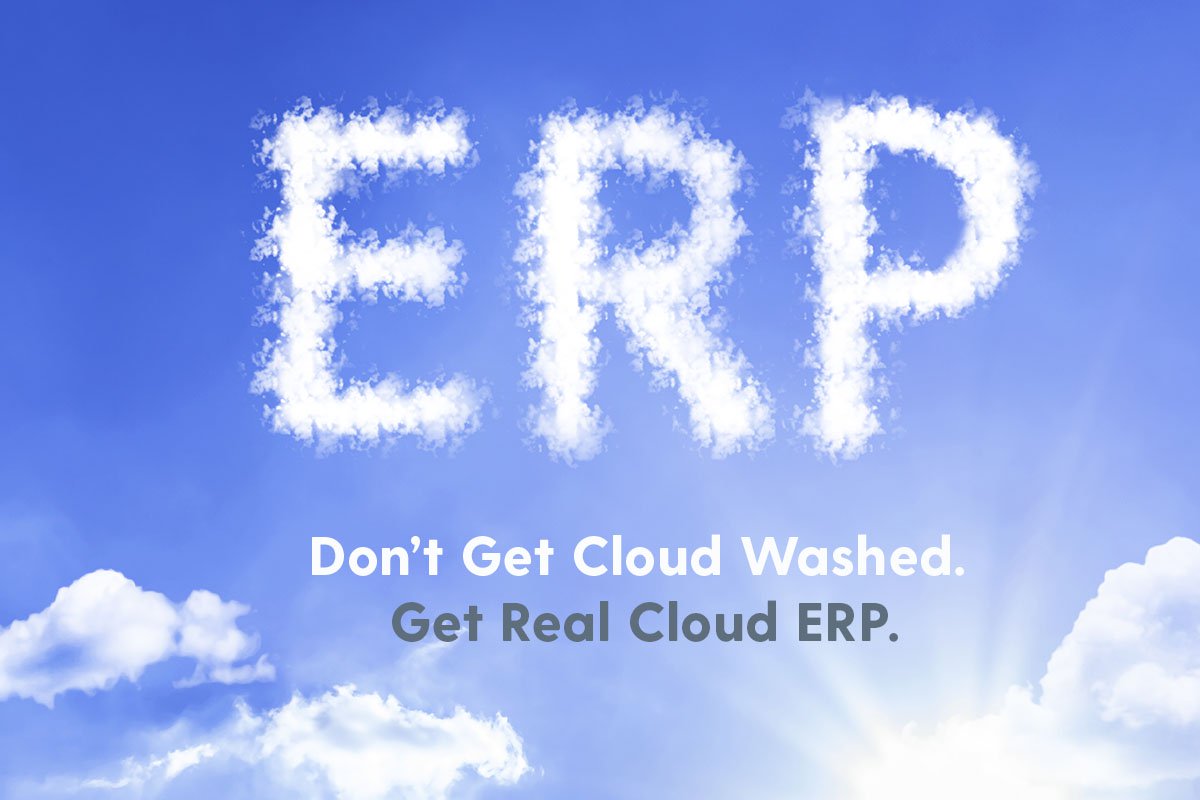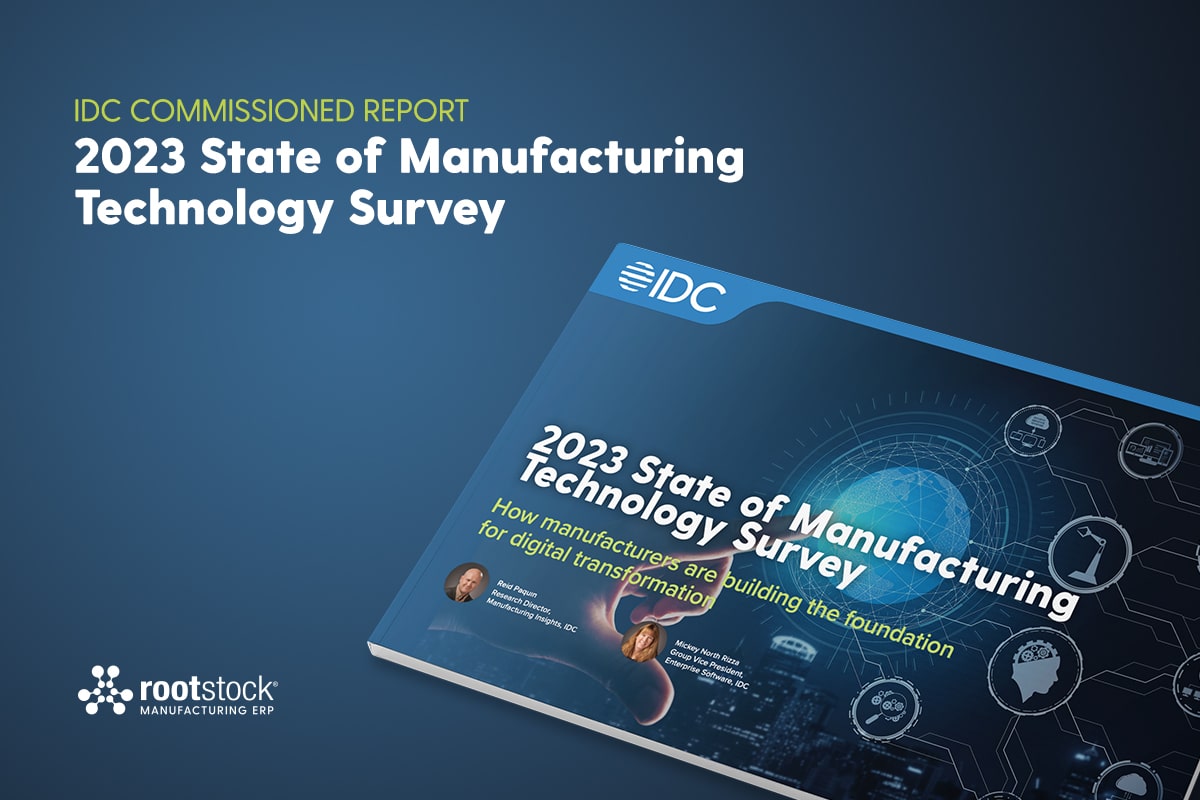What is Real Cloud ERP?
This past August, Diginomica author and industry sage Brian Sommer wrote an important article about the cloud software industry titled “It’s 2018 so why isn’t my ERP vendor multi-tenant?” In the article, Brian cajoled ERP software providers and users of old legacy ERP systems to make the move to multi-tenanted, cloud ERP. I won’t elaborate on all the compelling business, financial and IT reasons to replace your legacy systems with cloud ERP, but if you make the move to the cloud, make sure you get the real thing.
So, what is the real thing? The majority of the ERP providers have managed to stall the move to the cloud for many years (while the CRM & HR worlds have embraced it). ERP providers primarily did this to preserve traditional revenue models and sunken investments in legacy ERP. Realizing they are behind the times, many vendors are “cloud washing” legacy systems (adding the word cloud to old products) and promoting hosted systems as the real thing. Others are acquiring a myriad of cloud applications into a horrific looking Frankencloud of disjointed apps. And others have built cloud applications, but don’t really understand the importance of providing an industrial strength cloud platform as an underpinning for ERP.
No wonder so many companies, especially in the Manufacturing sector, are still running old systems. The systems they see packaged as “cloud” in the marketing place are not much better than what they have been using for years.
If you are considering cloud ERP, let me outline the characteristics of what we at Rootstock define as real, modern cloud ERP. I encourage you to visit our new web site to learn more about it.
Real Cloud ERP is Flexible
The manufacturing industry is undergoing massive changes caused by global competition, higher customer expectations and the arrival of Industry 4.0 technologies like 3D printing. Shorter product life cycles, new business models, more personalized products and the ability to compete aggressively on customer service require ERP systems that can quickly adapt to customer needs and business changes.
Rootstock developed our cloud applications for the Industry 4.0 era, giving manufacturers the operational agility to succeed in this environment. This includes the ability to operate in multiple modes or a hybrid combination of manufacturing modes simultaneously, e.g. make to stock, configure to order, engineer to order. This includes a project mode that gives companies the ability to manufacture personalized products in a more scalable and profitable way. Every portion of Rootstock Cloud ERP is designed to give manufacturers easy-to-configure options on how they price, cost, manufacture, stock, supply and service products without the rigidity and complexity of legacy ERP systems. This is a “clicks not code” approach that is drastically better than the legacy ERP systems hamstringing manufacturers today.
Real Cloud ERP is Truly Modern
Legacy ERP systems and their cloud-washed brethren are architected in a way that makes it difficult to change, extend and upgrade without an army of expensive consultants. In fact, many companies have painted themselves in a corner and are literally stuck in time on old software releases.
Salesforce was one of the first to understand this architectural limitation and built a more modern way to extend and upgrade enterprise applications with their multi-tenancy platform model. Because Rootstock uses the Salesforce Platform, customers can extend our applications, add their own custom applications or select from the thousands of applications on the Salesforce AppExchange without worrying about nasty upgrades and falling behind on product releases. This is a truly modern approach that some others have yet to crack the code on. The ability to upgrade and continually improve applications is a major reason why Rootstock chose the Salesforce platform for ERP.
Like “Cloud”, the word “Platform” is now being used by every ERP supplier, whether they truly have a platform or not. In our view, these so-called platforms pale in comparison to what we can offer in combination with Salesforce. For instance, applications on the Salesforce Platform automatically inherit things like advanced analytics, mobile apps, workflow, enterprise social media, customer and supplier communities that can all be deployed by mere mortals with a “clicks not code” approach. These items often appear in the “marketecture” of other ERP providers, disguising what really is just the same old technology stacks that need to be managed and stitched together by IT. The Salesforce platform and our ERP applications work more like your smartphone where you can easily install apps that automatically work with your camera and GPS. It is the modern way to deploy and manage enterprise business apps.
Real Cloud ERP is Digitally Connected
Digital transformation is primarily about electronically connecting people, data and things. Instead of being an enabler to digital transformation, legacy and cloud washed ERP systems are often inhibitors, because they are notoriously difficult to integrate and connect with. This again is another reason why we chose the Salesforce Cloud Platform with its innate ability to automatically support mobile devices, to securely externalize ERP functionality into customer and supplier communities, and soon, the ability to enter the world of IoT in a more packaged way.
When I talk to manufacturers, most of them say finding skilled labor is their #1 problem and they view digital transformation as one way to make their business more attractive to knowledge workers, especially younger folks. A twenty-something is not going to want to spend all day on an ERP system that’s 20 years or older. They have grown up living and working socially from mobile devices and will expect ERP and the other applications in your business to operate similarly.
Rootstock Cloud ERP can help in this regard by providing manufacturers a more modern and digital work experience for employees. For instance, Rootstock Cloud ERP has Salesforce’s Chatter, an enterprise social media app embedded in every object in our system. This allows anyone to have a conversation around any ERP object such as a work order, a BOM, a customer, an inventory item or an invoice all within one system. Unlike external social media apps that sit outside the ERP system (think technology stack diagram), Chatter conversations are embedded with the ERP data object. They are not detached from the system like an email, voice mail or text. Employee conversations about a late-paying customer become part of the system with an ERP audit trail where you can always find it. And of course, these conversations can occur at a customer’s site, in a delivery truck, on the shop floor or while you are at a ball game. This is how to digitally connect your employees in a modern way.
Provides a Single 360° View of Your Customers and Business
Most companies today have separate ERP and CRM systems, artificially splitting processes and data into at least two pieces. Some data typically resides on-premises, some might be in the cloud, and usually, a lot of information is stored in spreadsheets. Companies and even legacy ERP providers alike have come to realize that separating customer information into separate databases makes it difficult to know and service customers. This is especially important as companies feel the Amazon effect and find themselves competing more on service, not just products. The CRM/ERP gap causes company-wide process and information latency issues as transactions awkwardly traverse CRM and ERP, preventing executives from getting a complete, real-time view of their business.
Recognizing this, it has suddenly become fashionable among some ERP suppliers to tout “a 360° view of the customer” while they scramble to bolt together a myriad of acquired and multi-platformed applications into a Frankencloud. This is usually touted alongside Artificial Intelligence and Advanced Analytics capabilities that will somehow make sense of all these pockets of disjointed information. But still, all the right information doesn’t come together easily.
At Rootstock, the 360° view of your customers and business is nothing new. It is a core tenant of Rootstock’s architecture and another reason why we chose the Salesforce platform. When combined with Salesforce CRM, Rootstock Cloud ERP offers manufacturing, distribution, and supply chain organizations a single platform to grow and manage their businesses. They can eliminate the gap between ERP and CRM to become a more customer centric, agile and responsive company. They get complete visibility of customer interactions across both CRM and ERP on one platform and have a better understanding of their businesses from end to end. If your business is trying to be more customer centric, ERP, not just CRM, should be built around the customer.
So, don’t get cloud washed. Get the real thing. Rootstock Cloud ERP is a flexible, modern, digitally connected system that gives you a single, real-time view of your customers and business. I urge you to check it out at www.rootstock.com.







